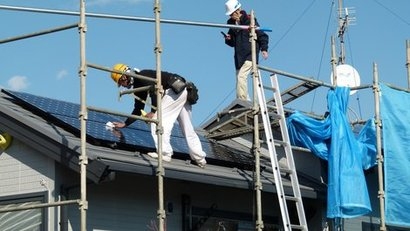
The report, The Vision for US Community Solar: A Roadmap to 2030, was produced for the non-profit group Vote Solar in partnership with GRID Alternatives and the Coalition for Community Solar Access (CCSA). It also informs state policy recommendations for delivering on the enormous, and largely untapped, potential to serve American households and businesses with affordable and reliable solar power. The predicted growth could amount to $120 billion in capital investments.
“Community solar is an important piece of a strong clean energy economy that benefits everyone, and the policy decisions taking place all across the country right now will determine how big it is and how fast we get there” said Marta Tomic, Vote Solar’s community solar programme director. “This research underscores the critical role that states have to play in unlocking the full potential of community solar by designing programmes that translates low-cost solar power into tangible bill savings and other economic benefits for customers. We are ready to work with lawmakers and regulators across the country to design smart community solar programmes that expand solar access to all customers, build a more resilient electric grid, and create more good local jobs in the nation’s new energy economy.”
Tom Figel, Policy & Regulatory Manager at GRID Alternatives, added that the community solar model has tremendous potential to reduce energy costs and create value for low-income customers and that the study shows that with the appropriate policies and support, community solar can create solar access for 50 million low-income customers, while driving significant economic opportunity and job creation for communities most in need.
Affordable solar energy is giving families, businesses, schools and many others a way to lower energy bills and invest in America’s new energy economy. However, physical and financial barriers prevent up to 75 percent of consumers from going solar on their own rooftops – families who rent, have shaded rooftops, or don’t qualify for standard financing solutions, for example. Well-designed community solar programmes give customers like these a way to go solar and save by enabling them to participate in a shared solar installation located somewhere else in their community and receive a credit on their utility bill for their share of the power produced.
Thanks to pent up customer demand, community solar has become the fastest growing segment of the US solar market with over one gigawatt of installed capacity nationwide, a number that could grow to 57-84 gigawatts by 2030 according to the new report.
By leveraging strong policies, business model innovation and continued cost reduction, community solar could reach millions of consumers that currently lack access to customer-sited solar options. With the right environment, community solar could provide over 2.5 percent of the nation’s total electricity consumption by 2030.
The report finds that, despite clear market opportunity, the model hasn’t yet achieved scale because only 19 states and the District of Columbia have state-wide community solar policies and even fewer have well-designed policies that adequately serve the diverse market segments, including low-income customers, that stand to benefit most from cost savings and stable electric bills and opportunity to drive clean energy access and economic impact in their communities. Well-designed state policies and market-enabling programmes that deliver tangible economic benefits to customer participants are key to successfully scaling the community solar market, which is itself a critical piece of the US transition to a clean, smart and resilient grid.
For additional information:

